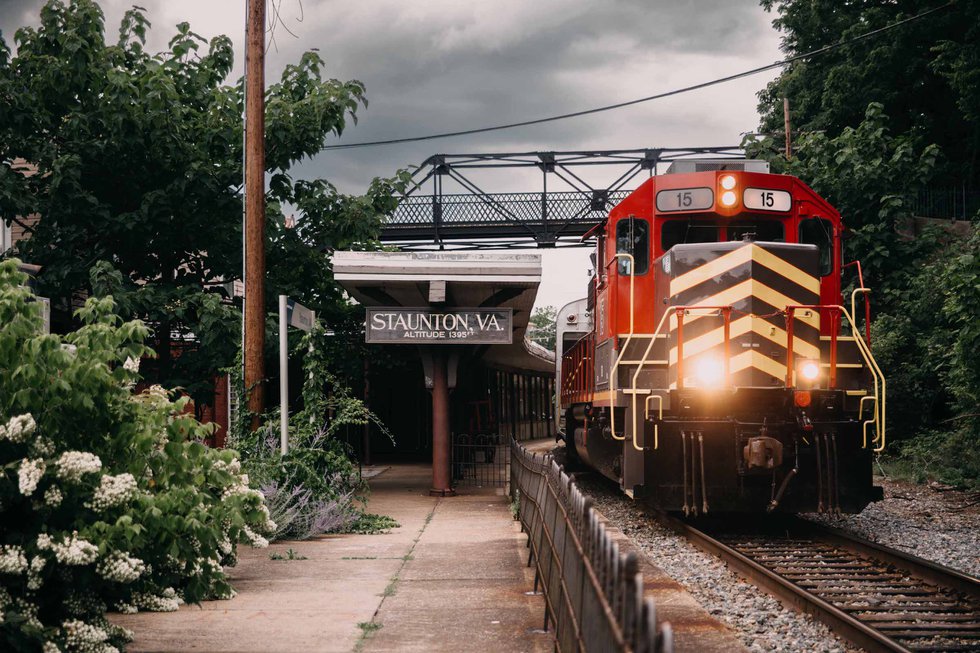5 international luxury retreats created by hoteliers who discovered paradise, and never left.

View from Quadrado, overlooking Rio Trancoso

Casa Gulab Mahal

View of the river from one of Chinzombo’s villa rooms

Watching elephants from the lounge

One of GoldenEye’s beach cottages

A suite at Inkaterra La Casona

Monastero Santa Rosa
When a Dutch fashion designer, an American music producer, a Peruvian eco-pioneer, a well-heeled American widow, and a descendent of the creator of the modern-day African safari each found their own Shangri-La, they knew what to do. The result is a collection of thoughtfully conceived, intimate hotels and resorts created by visionary owners with a passion for place. These five destinations in Brazil, Jamaica, Peru, Italy and Zambia pamper, yes, but they also open up cultures, arouse the spirit and nurture the true searcher’s soul, offering that rare travel experience that does more than simply scratch the surface of some far-flung spot—the kind of experience that stays with us long after it ends. And isn’t that what travel should be?
GoldenEye
Oracabessa, Jamaica
The first time Island Records founder Chris Blackwell visited GoldenEye, he and his mother, Blanche Lindo, had lunch with her close friends Ian Fleming and Nöel Coward at what was then Fleming’s home. Fifty years later, Fleming’s hideaway, where he wrote the iconic James Bond book series, is part of Blackwell’s small portfolio of relaxed-luxury resorts. In 1976, Blackwell bought the property from the Fleming estate and restored the author’s original 1950s home and lush tropical gardens, lagoon and private coastline into what is now a 52-acre property with 19 simply-appointed cottages. Blackwell’s idea was to recreate the free and relaxed setting he remembers as a boy on the large Jamaican estate where his mother had grown up and colorful characters mixed over meals and drinks.
In addition to its waterfront activities and spa treatments, visitors can experience the town of Oracabessa, which is bolstered by various health, education, sport and environmental development projects (funded through Blackwell’s foundation). Last year, Blackwell began opening his 2,500-acre organic farm, Pantrepant, to GoldenEye visitors for farm-to-table dinners. Guests can leave their mark at the idyllic retreat by making a donation to the foundation and planting an indigenous tree next to those from Johnny Depp, Kate Moss and other boldfaced names who have fallen in love with the resort.
From $400 to $8,500 per night, GoldenEye.com
Uxua Casa Hotel
Trancoso, Brazil
One visit to the remote fishing village of Trancoso on Brazil’s Bahian coast and Wilbert Das longed to return. A friend told him it would feel like home, and surprisingly, for a Dutch fashion designer who once headed Diesel’s creative team, it did. He was taken with the simple, unspoiled architecture, immaculate beaches and rich culture, and soon Das was looking for a vacation home. He settled on 10, encircling the town’s historic square (called Quadrado) and scattered throughout a garden filled with fruit trees. Das worked with local artisans and nearby Pataxó Indians to restore, furnish and decorate the loose collection of homes using traditional building methods and recycled materials. The resulting “casas,” completed in 2009, reflect the colonial, indigenous Indian and Afro-Bahian histories of the area with their rustic-modern sensibility.
In an attempt to blend in, the casas have no signage but enjoy access to hotel amenities such as a luxury spa; a lagoon-like pool made with 40,000 pieces of a local quartz thought to have healing powers; a beachfront lounge made from old fishing boats; and a restaurant serving regional Bahian fare with seafood right from the ocean and cocktails crafted from fruit grown in the garden.
Uxua (pronounced “U-shwah”) helps to sustain local culture by sponsoring Trancoso’s academy of Capoeira, an Afro-Bahian martial arts dance—which guests can experience—and working with local fisherman to preserve the rainforest and marine life. Ever the creative director, Das has lured an impressive list of international artists and designers to Uxua (the Pataxó word loosely meaning marvelous)—including Mario Testino, who photographed the resort for Vogue—and asked them to capture their impressions on photographic “canvases,” which can be seen on the Uxua web site.
From $387 to $1,395 per night, Uxua.com
Inkaterra La Casona
Cusco, Peru
In 2008, in the Peruvian city of Cusco, the launching point for many visitors to Machu Picchu, Jose Koechlin and his wife, Denise Guislain, carefully revived a 16th-century Spanish colonial mansion once owned by military and political leader Simón Bolívar. Peruvian natives and pioneers in eco-tourism in the region, Koechlin and Guislain are no strangers to bringing things back to life: Their organization, Inkaterra, sponsors and leads conservation efforts at their four hotel properties, including developing the world’s largest native habitat of orchids (372 species), and aiding in the discovery of 14 new rainforest species.
The couple’s fourth and most luxurious hotel project has been the transformation of one of the earliest Spanish structures in Cusco. Built as the private home of a conquistador, La Casona comprises 11 suites in a two-story arcade surrounding a courtyard. Guislain oversaw the restoration and sourced authentic local materials like ancient ceramics, woven textiles, handmade wooden artifacts and Spanish-Baroque furniture so guests will feel as if they’re staying in a lavish, Colonial Peruvian home. There is no lobby or front desk, but homey perks like a living room with nightly wood-burning fires take off the chill of cold Andean nights. All suites feature open fireplaces, heated floors, extra-large bathtubs and a concierge who will tailor custom excursions to archeological sites or Incan villages.
From $380 to $590 per night, Inkaterra.com/Inkaterra/La-Casona
Monastero Santa Rosa
Amalfi Coast, Italy
From its dramatic perch atop a 1,000-foot cliff, a 17th-century convent caught the eye of Bianca Sharma, the American widow of a tech entrepreneur. Sharma was yachting on a friend’s boat off the Amalfi Coast and became transfixed with the white stone structure near Conca dei Marini, a tiny township between Amalfi and Positano. When she learned it was for sale in 1999, Sharma bought the vacant property. She then moved to the coast and spent the next 10 years reviving Monastero Santa Rosa with intense attention to detail. She worked with a local architect to try and preserve every historic detail of the three-story structure while transforming it into a small luxury hotel and spa with 20 sea-view suites. She saved many original furnishings and added others sourced from local salvage yards. Vatican landscape architect Tiziano Giangiulio designed the stunning tiered gardens—planted with 300 Mediterranean species of aromatic herbs, wisteria, scented jasmine and lemon, fig, pomegranate, olive and orange trees—that lead down to a cliff-side infinity pool.
Guests can take advantage of the spa’s complimentary 750-square-foot thermal suite with its series of connected relaxation experiences such as a stone sauna, herbal steam room, hydrotherapy pool, crushed-ice fountain and more—each carved out of dramatic domed and vaulted spaces within the monastery. Many aspects of the Dominican nuns’ daily lives are celebrated at Santa Rosa once again. The spa menu carries on the tradition of the convent’s medicinal potions using Florentine products adapted from those developed by Dominican monks in the 13th century. The resident nuns were also famous for their flaky, shell-shaped sfogliatella pastries—heavenly crescents filled with ricotta, cream and almonds—which today Chef Christoph Bob makes daily for breakfast. But perhaps the most memorable experience at Santa Rosa will be the simple act of taking in the view from a daybed in the gardens.
From $455 to $3,643 per night, MonasteroSantaRosa.com
Chinzombo Safari Camp
Luangwa River, Zambia
On the banks of the Luangwa River in Zambia, a new eco-luxe safari lodge sits on the site of legendary environmentalist Norman Carr’s private getaway. Carr pioneered the walking safari in the ’50s, promoting photography over shooting, at a time when safaris were focused on hunting. Today, the company bearing his name emphasizes conservation in the development of its seven safari camps in Zambia’s Luangwa Valley. Last June, Carr’s daughter-in-law spearheaded the creation of the newest camp, Chinzombo, its striking, modern-campaign look meant to blend into its unspoiled wildlife habitat. Acclaimed husband-and-wife architect and design team Silvio Rech and Lesley Carstens, known for their “African minimalism” aesthetic, created a luxury experience to complement the 60-acre site located on a ridge that follows a bend in the Luangwa River where giraffe, elephant, buffalo, antelope and kudu come for daily drinks.
The camp’s six modernist, steel-framed villas have no walls—they’re open to the elements (and the wild), with raw linen curtains that can be pulled around beds and baths. Each has an expansive shaded deck for acclimating to the pace of life in the wild, and—lest you think they’re too rustic—private rectangular plunge pools and an eco-friendly cooling system to keep guests comfortable. Interiors are appointed with sustainably sourced and recycled materials. Set under ancient msikzi trees, Chinzombo’s raised structures seem to float in the tranquil landscape. And if the river should flood, Chinzombo could be picked up and moved, leaving zero carbon footprint.
Though it may be hard to leave the relaxation of Chinzombo, guests can venture to the South Luangwa National Park by private boat, past waters teaming with hippo and crocodile for guided daily game walks and drives.
From $900 to $1,250 per night, NormanCarrSafaris.com









